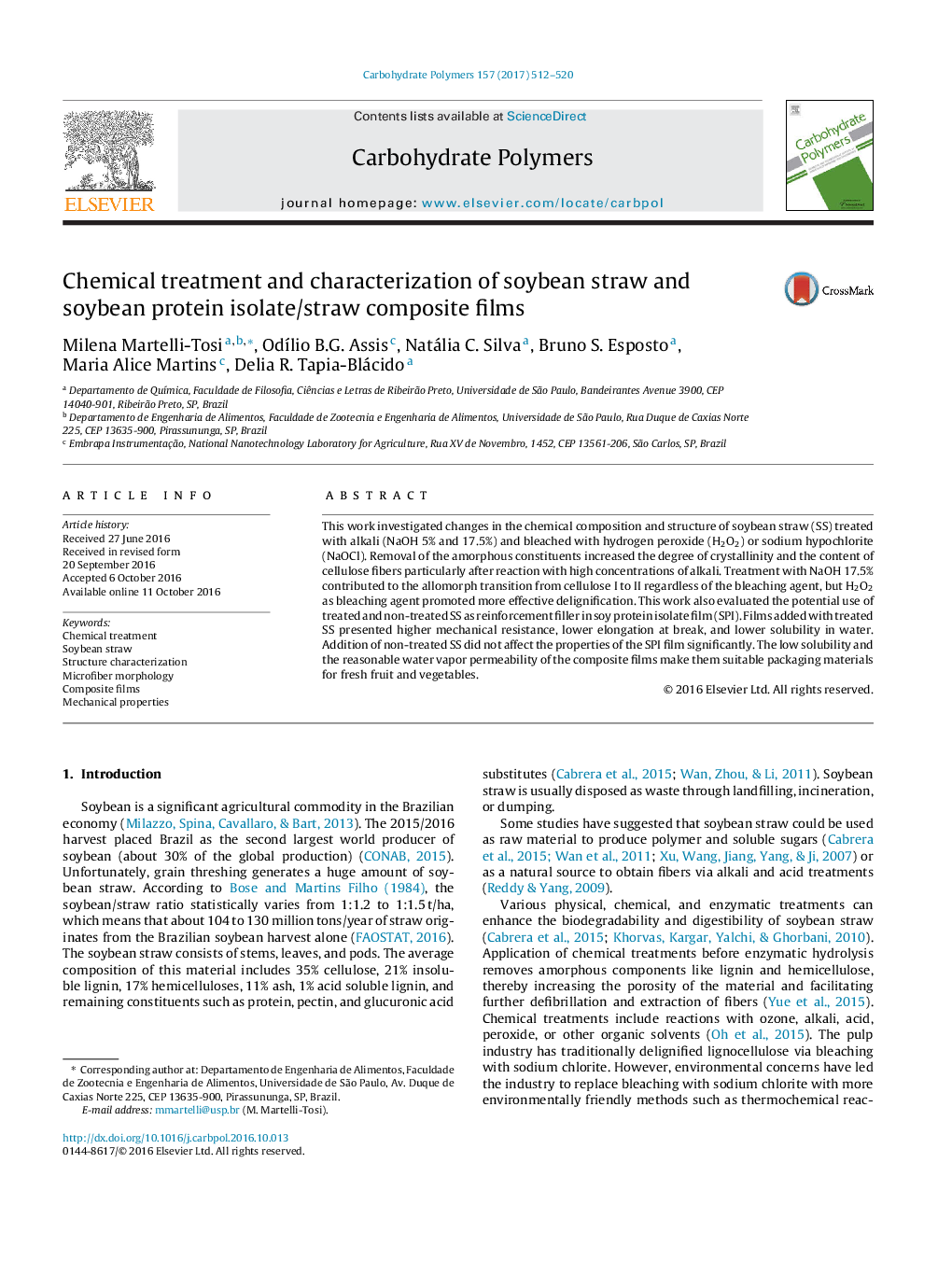| Article ID | Journal | Published Year | Pages | File Type |
|---|---|---|---|---|
| 5157847 | Carbohydrate Polymers | 2017 | 9 Pages |
Abstract
This work investigated changes in the chemical composition and structure of soybean straw (SS) treated with alkali (NaOH 5% and 17.5%) and bleached with hydrogen peroxide (H2O2) or sodium hypochlorite (NaOCl). Removal of the amorphous constituents increased the degree of crystallinity and the content of cellulose fibers particularly after reaction with high concentrations of alkali. Treatment with NaOH 17.5% contributed to the allomorph transition from cellulose I to II regardless of the bleaching agent, but H2O2 as bleaching agent promoted more effective delignification. This work also evaluated the potential use of treated and non-treated SS as reinforcement filler in soy protein isolate film (SPI). Films added with treated SS presented higher mechanical resistance, lower elongation at break, and lower solubility in water. Addition of non-treated SS did not affect the properties of the SPI film significantly. The low solubility and the reasonable water vapor permeability of the composite films make them suitable packaging materials for fresh fruit and vegetables.
Keywords
Related Topics
Physical Sciences and Engineering
Chemistry
Organic Chemistry
Authors
Milena Martelli-Tosi, OdÃlio B.G. Assis, Natália C. Silva, Bruno S. Esposto, Maria Alice Martins, Delia R. Tapia-Blácido,
